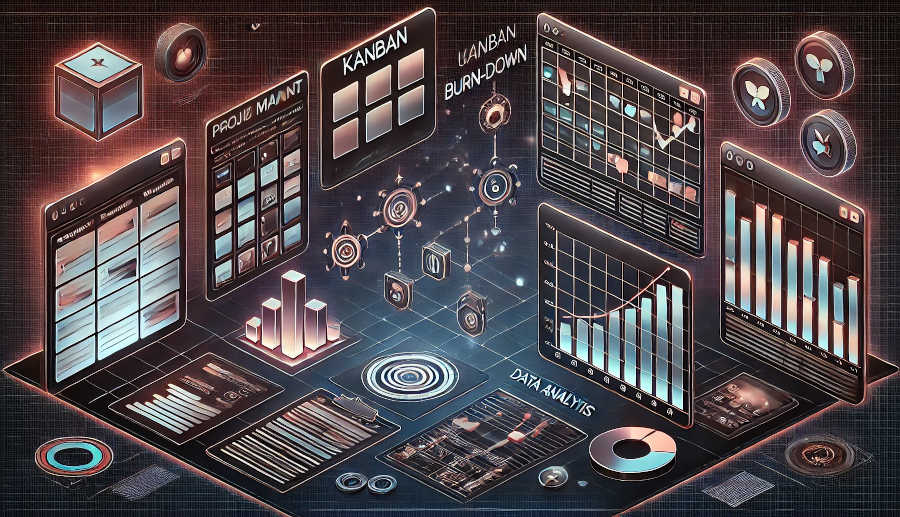Understanding User Stories in Agile
User stories are a cornerstone of Agile development, serving as a lightweight yet effective way to capture requirements. Unlike traditional requirement documents, which are often lengthy and technical, user stories are written in simple, non-technical language. They focus on the end user's needs and describe what the user wants to achieve with the software. A typical user story follows the format: "As a [type of user], I want [some goal] so that [some reason]." This structure ensures that the development team remains focused on delivering value to the user, rather than getting bogged down in technical specifications.
One of the key advantages of user stories is their adaptability. Since Agile projects are iterative and incremental, requirements often evolve as the team gains more insights or as market conditions change. User stories can be easily updated, reprioritized, or even discarded if they no longer align with the project's goals. This flexibility allows Agile teams to respond quickly to feedback and changing priorities, ensuring that the final product meets the users' needs. Additionally, user stories encourage collaboration between stakeholders, developers, and testers, fostering a shared understanding of the project's objectives.
However, user stories are not without their challenges. Their brevity can sometimes lead to ambiguity, especially if the context or acceptance criteria are not clearly defined. This can result in misunderstandings or misinterpretations, potentially leading to features that do not fully meet user expectations. To mitigate this risk, Agile teams often complement user stories with acceptance criteria, wireframes, or prototypes to provide additional clarity. Despite these challenges, user stories remain a powerful tool for Agile teams, enabling them to deliver value incrementally while maintaining a strong focus on user needs.
Exploring Requirement Documents in Traditional Development
In contrast to user stories, traditional development methodologies like Waterfall rely on comprehensive requirement documents. These documents are typically created at the outset of a project and serve as a detailed blueprint for the entire development process. Requirement documents include functional specifications, technical requirements, use cases, and other critical information. They are often written by business analysts or product managers and reviewed by stakeholders before being approved for implementation. This approach ensures that all parties have a clear and shared understanding of what needs to be built.
One of the main strengths of requirement documents is their thoroughness. By capturing all requirements upfront, traditional development teams can minimize ambiguity and reduce the risk of scope creep. This is particularly important in large, complex projects where even minor misunderstandings can lead to significant delays or cost overruns. Additionally, requirement documents provide a stable foundation for planning, estimating, and resource allocation, which can be especially valuable in projects with fixed budgets or tight deadlines. They also serve as a reference point throughout the development process, helping teams stay aligned with the original vision.
However, the rigidity of requirement documents can also be a drawback. Once finalized, these documents are often difficult to change, even if new insights or market conditions emerge. This lack of flexibility can make it challenging for traditional development teams to adapt to evolving user needs or technological advancements. Furthermore, the creation of detailed requirement documents can be time-consuming and resource-intensive, potentially delaying the start of development. Despite these limitations, requirement documents remain a valuable tool for traditional development teams, particularly in projects where stability and predictability are paramount.
Comparing User Stories and Requirement Documents
The choice between user stories and requirement documents often depends on the nature of the project and the development methodology being used. Agile methodologies, with their emphasis on flexibility and iterative development, are well-suited to user stories. These narratives allow Agile teams to prioritize user needs, respond to feedback, and adapt to changing requirements. In contrast, traditional development methodologies like Waterfall are better suited to requirement documents, which provide a detailed and stable blueprint for the entire project. Both approaches have their merits, but they serve different purposes and are optimized for different contexts.

One of the key differences between user stories and requirement documents lies in their level of detail. User stories are intentionally concise, focusing on the user's needs and goals without delving into technical specifics. This makes them easy to understand and update, but it can also lead to ambiguity if not properly supplemented with additional information. Requirement documents, on the other hand, are highly detailed, covering every aspect of the project from functional specifications to technical requirements. This level of detail reduces ambiguity and provides a clear roadmap for development, but it can also make the documents cumbersome and difficult to modify.
Another important distinction is the role of collaboration in each approach. User stories thrive on collaboration, with stakeholders, developers, and testers working together to refine and prioritize the stories. This collaborative process ensures that everyone has a shared understanding of the project's goals and can contribute their expertise to the solution. Requirement documents, while also created through collaboration, are typically finalized early in the project and are less open to ongoing input. This can limit the team's ability to adapt to new information or changing priorities, but it also provides a stable foundation for planning and execution.
Conclusion
In conclusion, both user stories and requirement documents play a crucial role in defining and managing software requirements, but they are suited to different methodologies and project contexts. User stories, with their focus on user needs and adaptability, are ideal for Agile teams that value flexibility and collaboration. They enable teams to respond quickly to feedback and changing priorities, ensuring that the final product meets the users' needs. Requirement documents, on the other hand, are better suited to traditional development methodologies like Waterfall, where stability and predictability are paramount. They provide a detailed and stable blueprint for the entire project, reducing ambiguity and minimizing the risk of scope creep.
Ultimately, the choice between user stories and requirement documents depends on the specific needs of the project and the development methodology being used. Agile teams may find user stories more effective for capturing and managing requirements in a dynamic environment, while traditional development teams may prefer the thoroughness and stability of requirement documents. By understanding the strengths and weaknesses of each approach, teams can make informed decisions that align with their project goals and deliver the best possible outcomes for their users.
FAQ
1.Can user stories be used in traditional development methodologies?
While user stories are most commonly associated with Agile methodologies, they can be adapted for use in traditional development. However, their brevity and focus on user needs may not align well with the detailed and comprehensive nature of traditional requirement documents. In such cases, user stories can be used as a supplementary tool to capture high-level user requirements, but they may not replace the need for detailed documentation.
2.How do requirement documents handle changing requirements?
Requirement documents are typically created at the outset of a project and are designed to provide a stable foundation for development. While they can be updated, the process is often cumbersome and may require formal approval from stakeholders. This rigidity can make it challenging for traditional development teams to adapt to changing requirements, particularly in fast-paced or dynamic environments.
3.Are user stories suitable for large, complex projects?
User stories can be used in large, complex projects, but they may need to be supplemented with additional tools and techniques to ensure clarity and alignment. For example, Agile teams may use epics to group related user stories, or they may create detailed acceptance criteria, wireframes, or prototypes to provide additional context. While user stories offer flexibility and adaptability, their brevity can sometimes lead to ambiguity in highly complex projects.
ARTICLE TITLE :User stories in Agile vs. requirement documents in traditional development ,AUTHOR :ITpmlib

















